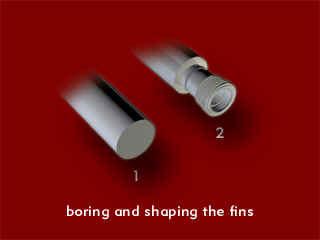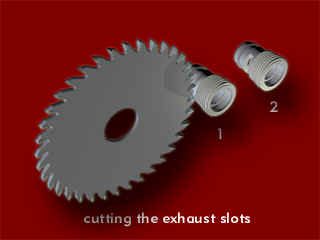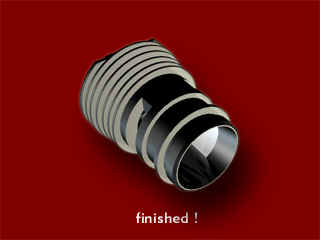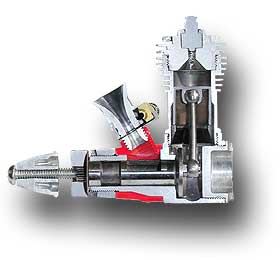The Making of ...

... a typical COX cylinder
- start with a plain bar stock material of leaded steel,
- drill step bore for piston and glow head,
- shape fins and foot using special tooling,
- add the threads for glow head and crankcase.
Remark:
These operations were performed using an automatic screw machine, typically
producing 300 raw cylinders per hour.

- machine two flats at top fin (not all models),
- cut the exhaust slots.

- machine transfer passages,
- apply black oxide,
- hone cylinder bore.
Remark:
Above the exhaust ports, the honing produced a slightly tapered bore with a
prescribed accuracy of better than 2/10000 of an inch. Below the exhaust
ports, the taper was increased to reduce friction.

Tee Dee engines used wider bypass channels, which were enlarged by milling along the vertical edges of the standard bypass channels. All engines, except for the .15 Mk. II have two exhaust ports.
Many more details as well as an explanation of the basic numbering system, can be found in the articles by Dan Sitter, published in the Engine Collectors Journal (ECJ).
